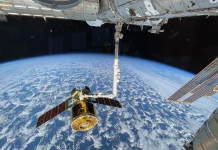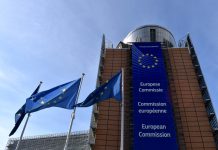The new Horizon Europe programme will pick up where Horizon 2020 left off, with five main missions – cancer, climate change, marine environment, smart cities and food security
The public health crisis of COVID-19 swept through Europe, diverting various funding efforts to creating, manufacturing and distributing the vaccine. To monitoring the highly infectious disease, studying it, and predicting what it could next become.
The €750 billion recovery effort, Next Generation EU, is the recovery package that is rolling out as 2021 progresses.
Does this mean that funding has been diverted away from other ideas? It seems not.
What is Horizon Europe?
Horizon Europe is the much-lauded heir to Horizon 2020, which launched countless ideas in various areas. From food security to mental health, Horizon 2020 was prolific in many scientific outputs seen over the last five years.
Horizon Europe is a €94.1 billion programme for research and innovation that attempts to do the same, in a significantly changed world. On 20 March, 2019, negotiators for the European Parliament and the Council of the EU reached an important agreement on most aspects of the legislation that will establish Horizon Europe.
Now, in 2021, the five main missions are clear. And though none of them directly name COVID-19, each one is part of the core rebuild that would make a future epidemic easier to survive.
What are the five main missions?
1. Curing Cancer (or getting as close as possible)
If things continue as they are, the number of people newly diagnosed with cancer every year in Europe will increase from the current 3.5 million to more than 4.3 million by 2035. This mission has specific goals. More than 3 million lives saved, living longer and better, achieving a thorough understanding of cancer, prevent what is preventable, optimising diagnosis and treatment, supporting the quality of life of all people exposed to cancer, and ensuring equitable access to the above across Europe.
2. Fighting climate change (from a human perspective too)
This mission is looking to combine traditional climate change science with a more socio-economically aware perspective. Think of the overlap between poor neighbourhoods, pollution and more fatal COVID cases. Interconnected impacts are on the radar here. Two key aims are to support 200 EU communities in creating an innovation pathway, and scaling up solutions that create societal transformations as seen in 100 moments of resilience.
3. ‘Mission Starfish’ (time to save the ocean, properly)
The blue economy recently made waves with new funding opportunities, but what about the climate-only side of things? The Mission Board on Healthy Oceans, Seas, Coastal and Inland Waters has proposed this mission, which takes its name from the shape of a starfish – by embodying five key points, within the five key missions:
- Filling the knowledge and emotional gap;
- Regenerating marine and freshwater ecosystems;
- Zero pollution;
- Decarbonising our ocean and waters;
- And revamping governance.
The overall hope is to restore the water system in full.
4. 100 climate-neutral cities
Climate neutrality is a hot topic across the globe, especially with the new US administration and even in the UK. How are the EU approaching it? They want to create 100 complex cities, which can be climate-neutral by 2030. Decarbonisation strategies for transport are already in place in various pieces across the continent – but this is a unifying push to see whole cities transformed and functionally running.
5. Soil (aka food security)
With food security wavering across the globe due to climate-related weather shifts and land losses, the soil that food grows in is becoming increasingly relevant to millions of livelihoods. The EU wants to push for a world in which “75% of soils are healthy by 2030 and are able to provide essential ecosystem services”, such as the provision of food and other biomass, supporting biodiversity, storing and regulating the flow of water, or mitigating the effects of climate change. Soil management will be demonstrated in “Living labs” and “Lighthouses”. To make this work, the mission will also improve the monitoring of soil health and the pressures acting on them, mobilise investments, and encourage changes in policies.
The mission will be a joint endeavour by stakeholders, researchers, policy-makers and citizens alike that will put Europe on a path towards sustainable land and soil management as part of a wider, green societal transition.











